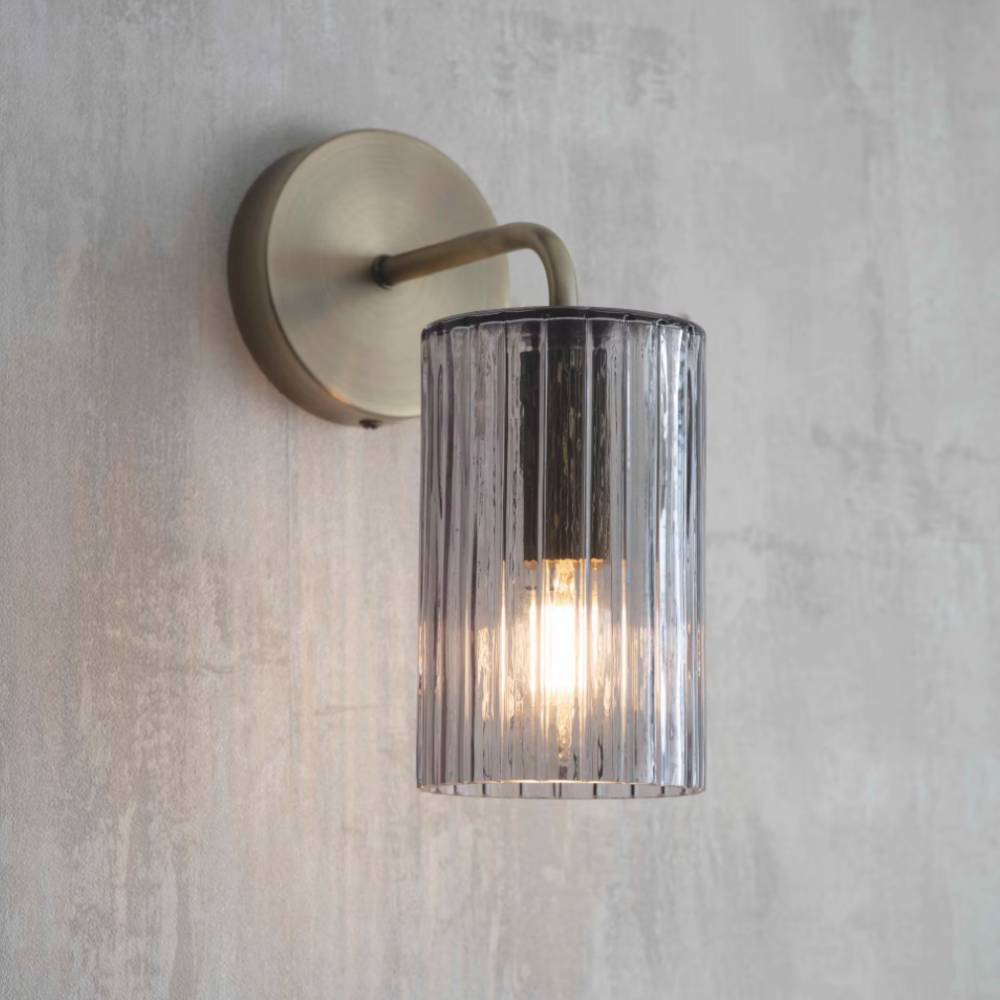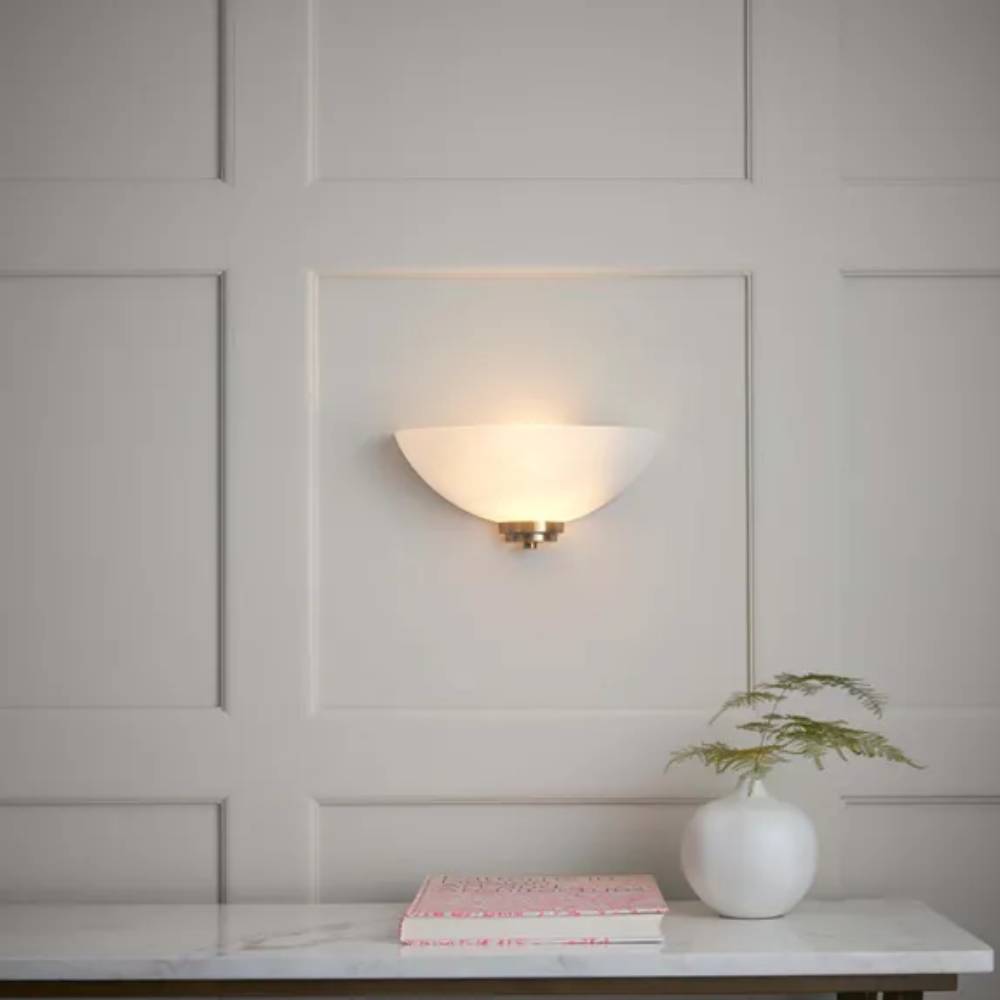These living room wall lighting ideas will transform your space into a cosy retreat on the cold, autumn evenings
Let these living room wall lighting ideas, together with insider advice and tips from lighting designers and experts, spark your imagination
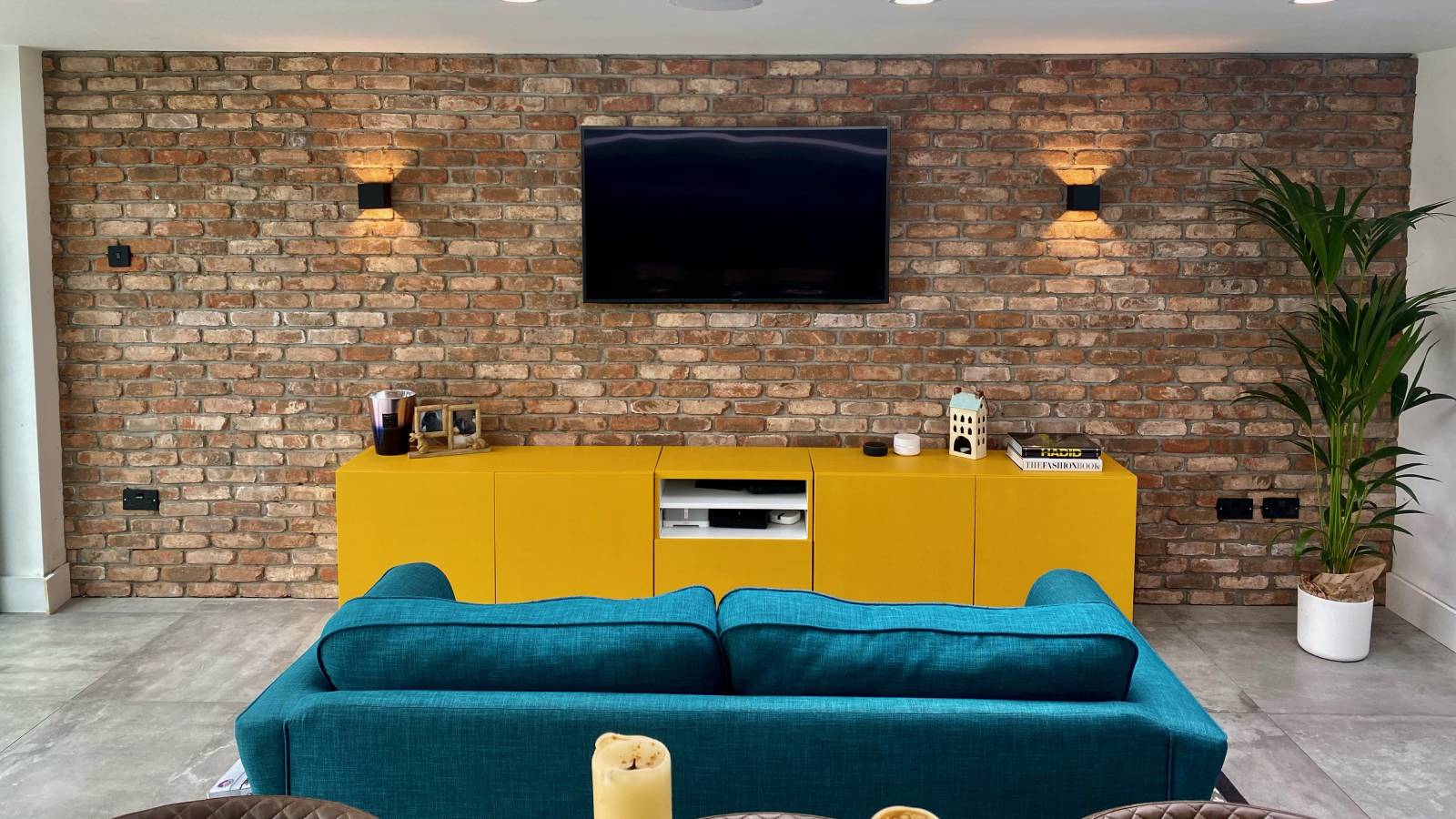
Introducing living room wall lighting ideas isn't a tricky prospect, but ensuring this feature performs well on both a practical and aesthetic level requires some forethought. A correctly layered lighting design plan for this pivotal and versatile room is an essential starting point.
Living rooms are places to welcome guests, relax with a good book or cosy up with your family to watch a film. These days, they might also function as a home office or a playroom. So, your chosen lighting design might need to cater for all of these functions — and this is where wall lights come in.
Here, we asked lighting experts and designers for their top tips for getting the best from living room wall lights, and have paired this with stylish ideas for inspiration.
What to know before planning your living room wall lighting ideas
Before you go off an buy the first wall lights that catch your eye, the lighting design scheme for the entire living room must first be considered.
"The right lighting can uplift and transform any room, it can add life to dull corners and inject personality and style into your space," begins Danielle Le Vaillant, head of photography and film at Cox & Cox.
"When starting from scratch, make sure you have plenty of sockets installed for positioning table lamps and ensure light switches are easy to access, so you aren’t stretching across furniture or people once the room is complete. Plan for main lighting, wall lights and lots of options for floor and table lamps for an atmospheric layered scheme.
"Wall lights are great for creating atmosphere and highlighting attractive features or artwork in a room. They also offer a more flattering glow than an overhead light."
1. Create a cosy mood with your wall lighting
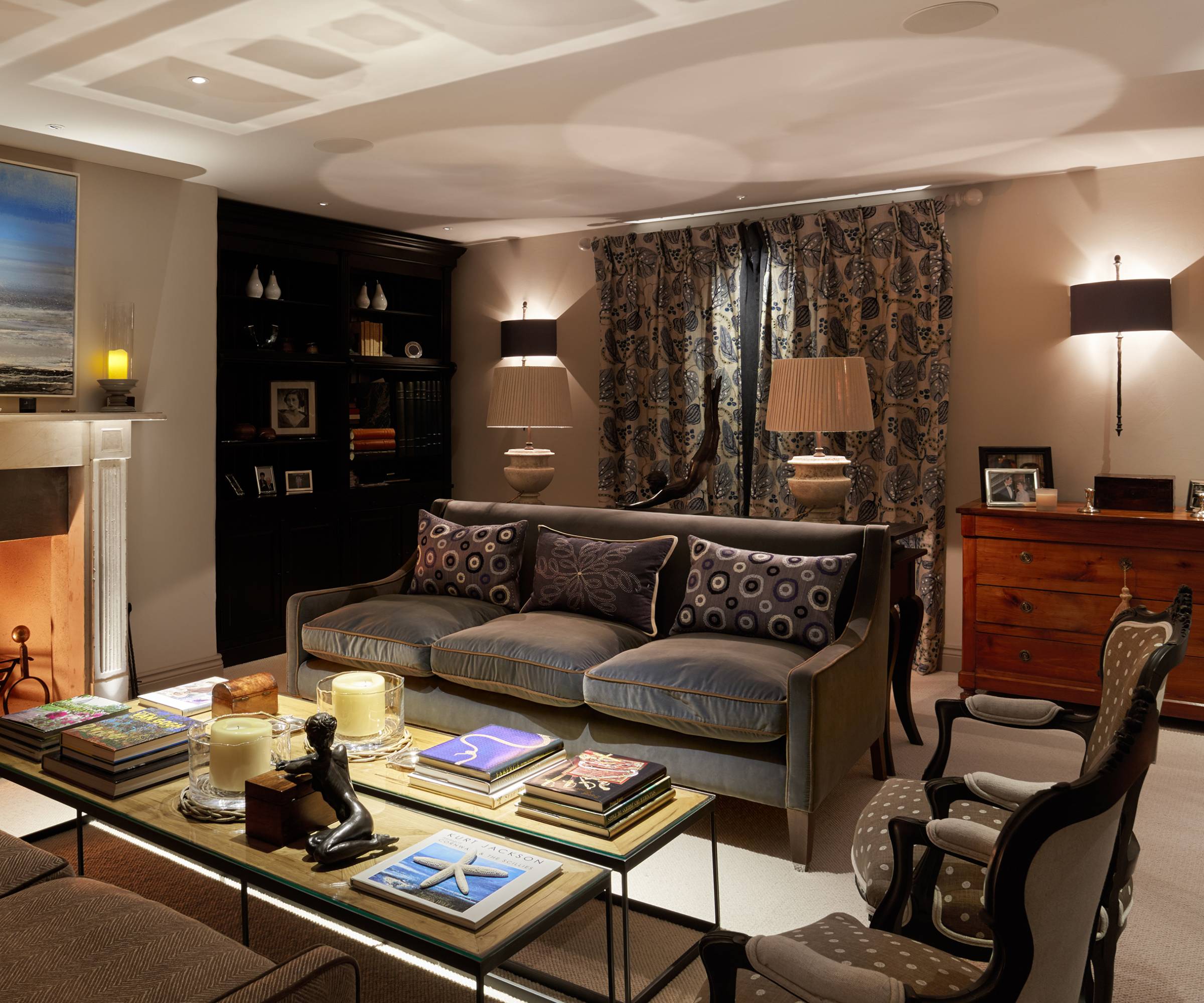
There are a few technical tricks to set the right atmosphere with wall lighting for living rooms.
The first, get the position of your fixture right. If you have a central piece of artwork or a statement sofa, use the wall lights either side to create visual thirds. Not only will this ensure the room is evenly lit, but it will also register to visitors as a well-considered space.
Next is the height of the wall lights — something many homeowners get wrong. "The rule of thumb recommendation is normally 1700/1800mm from floor to the centre of the fitting," advises Vanessa Macedo, senior lighting designer for John Cullen Lighting. "However, this changes if we are talking about a more sculptural piece, in those cases we need to evaluate the design of the fitting and the space and make it cohesive."
Finally, the warmth of the bulbs (cool vs warm light) and the lumens are pivotal. "In the living room, you want your light to be warm and cozy, so everything 2400K to 2700K is a good choice, and about 600lm per lamp," continues Vanessa.
"We normally recommend the use of dimmable lamps, and in some cases the use of a dim-to-warm lamp so you have a bigger range of light colour (3000K – 2000K). These lamps are ideal if the wall light is the sole source of light in that particular space."

Vanessa has been working in lighting design for almost eight years and offers consultation through her own brand AFAIR design.
2. Consider the design of the whole room when choosing living room wall lighting ideas
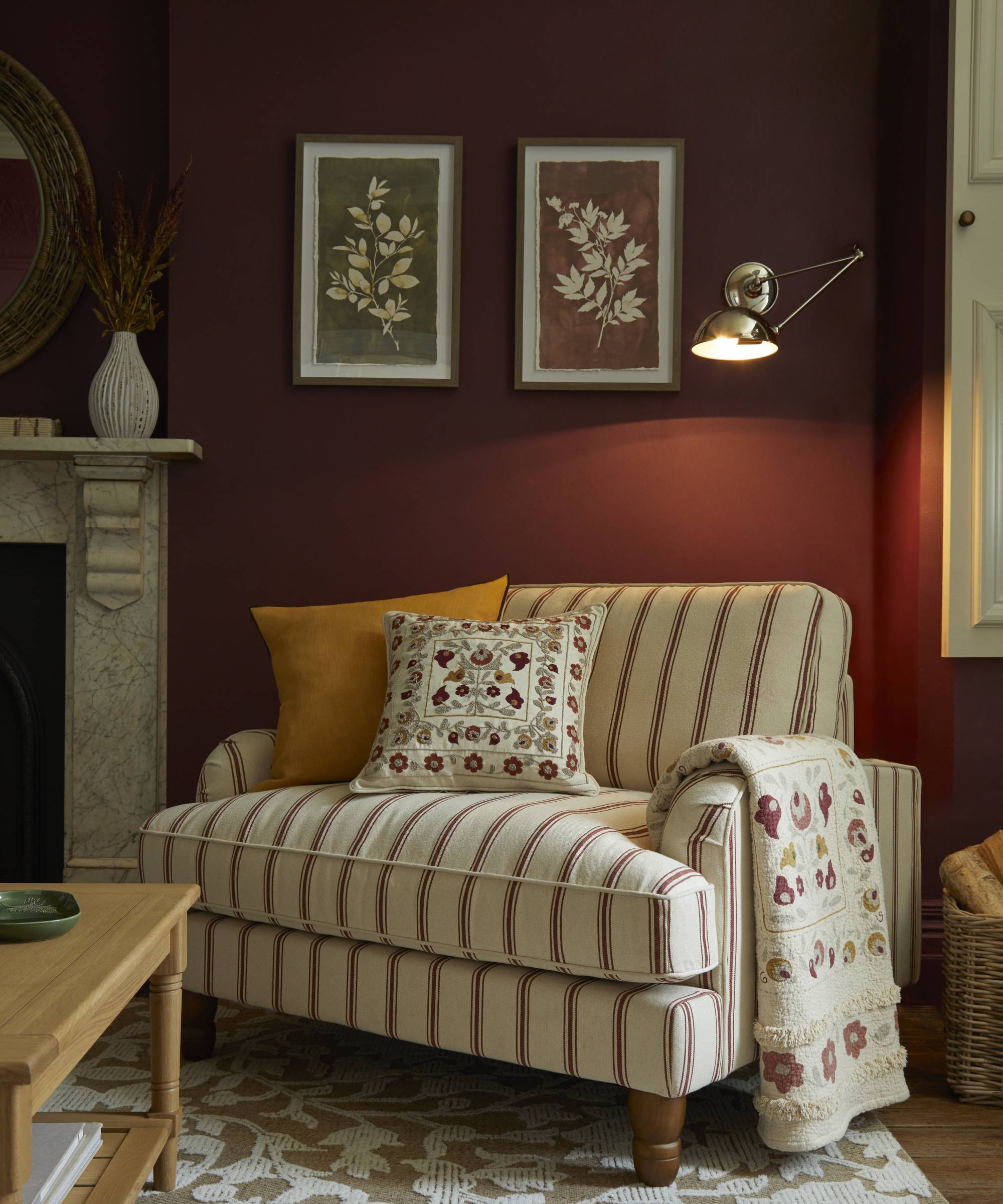
Lighting is just one element of good interior design, but an easily overlooked one when competing with architectural features, paint schemes and furniture.
"When designing a lighting scheme for your living room, firstly think about the finishes and colours of your chosen materials, says Vanessa Macedo. "Understanding if you are lighting matte or glossy surfaces as well as dark or light colours is key when designing the scheme.
"Is there going to be a TV and/or artwork? It is always a good idea to light your art, but you you don’t want to have light pointing at your TV as this will create a lot of reflections.
"The layout of furniture is important too, as you want to illuminate key features and not just flood the space with light which will make it very flat.
"After all these have been taken into consideration, you should think about layering the light. Having small pools of lower level light creates a cozier and warmer feel to the room."
3. Create a focal feature with a statement wall light
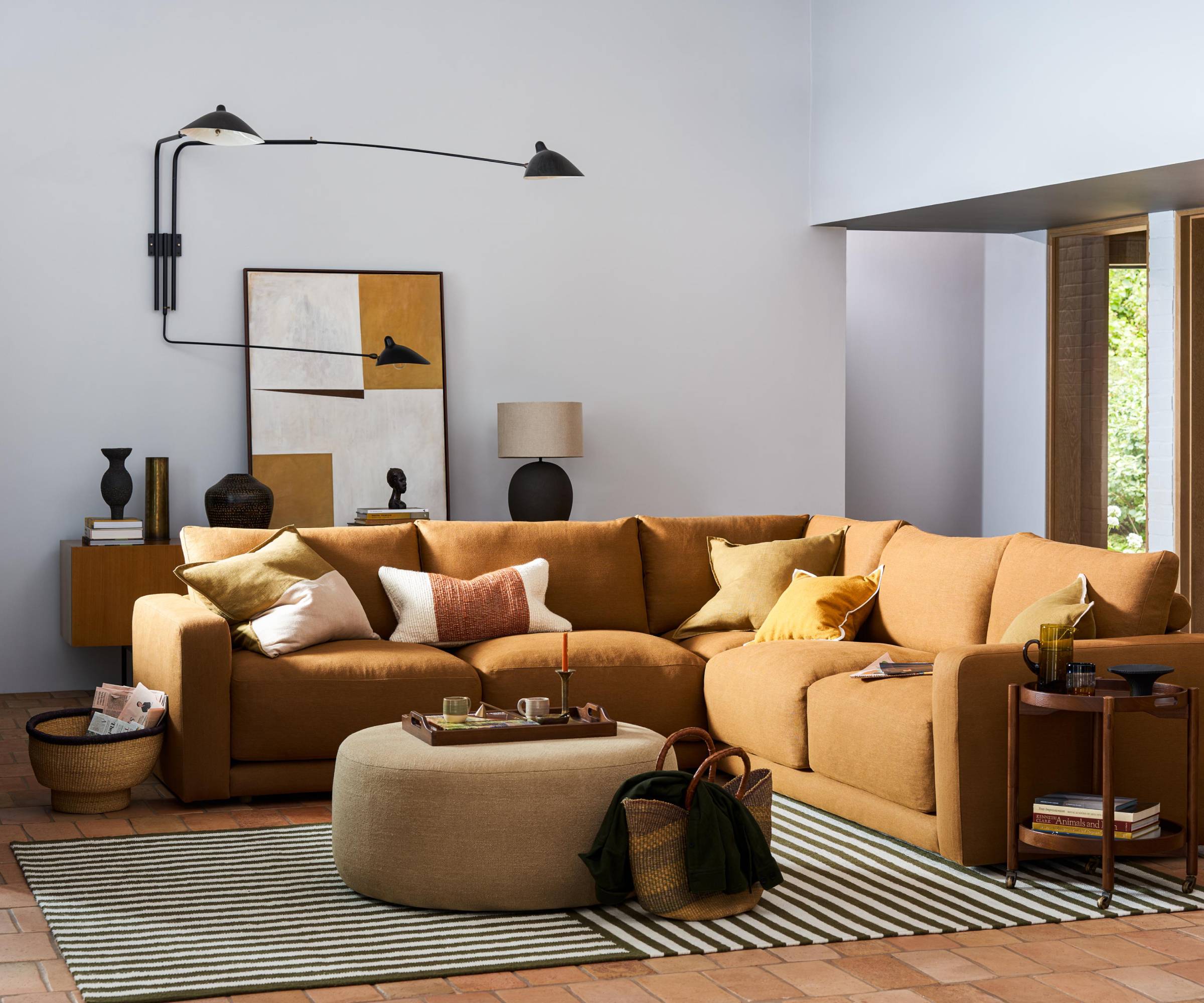
Whilst we tend to see wall lights as fulfilling a practical function – bringing ambient, accent or task lighting to a living space – they can actually bring a entirely new dimension to this room — acting as focal points in their own right.
"Wall lights can help break long expanses of wall, and at the same time bring a decorative element to the space. Depending on the wall light, it could almost be looked upon as a sculptural art piece," explains Vanessa Macedo.
This modern living room's adjustable wall light not only brings a height and presence to the space, but functionally can be used to illuminate the art work and provide reading light for those of the sofa.
Three glass wall lights to consider
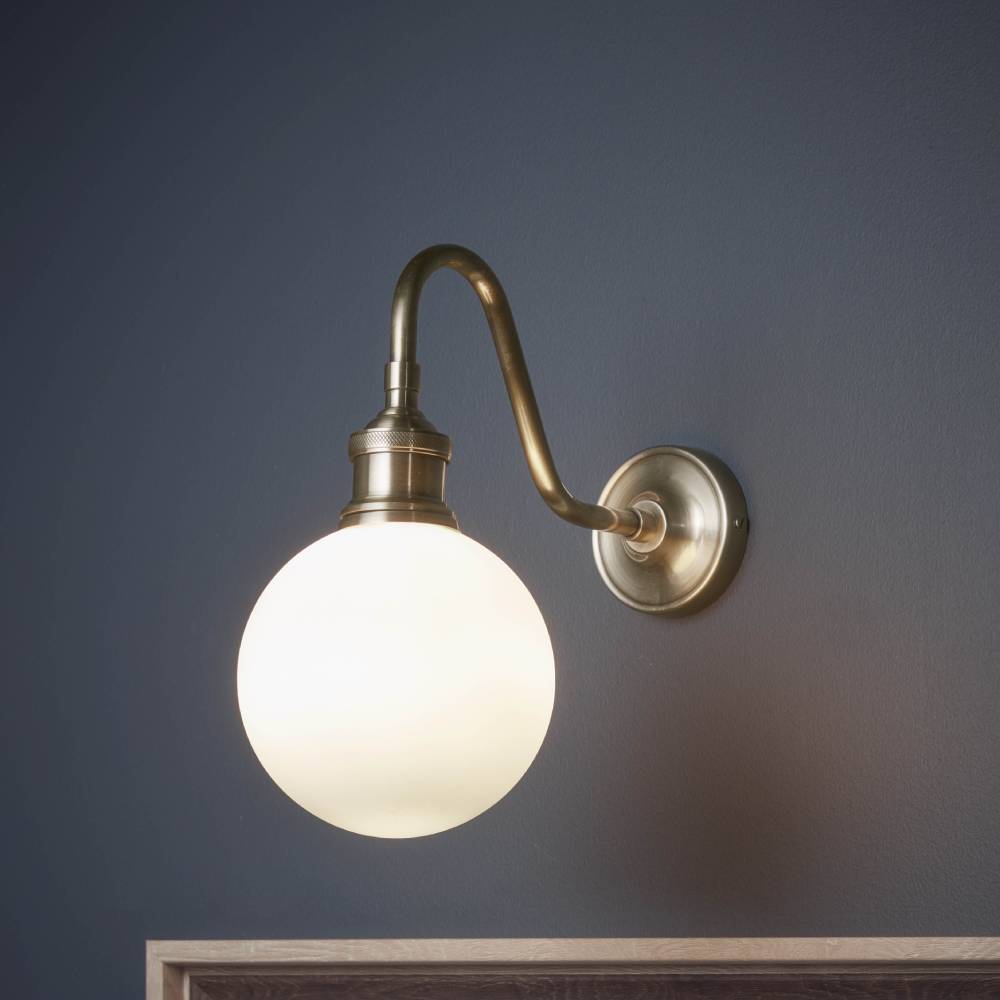
Price: £150
A swan neck shape in antique brass gives this wall light a period edge, while the frosted glass will ensure a calming, diffused light is cast.
4. Brighten a small snug with wall lighting
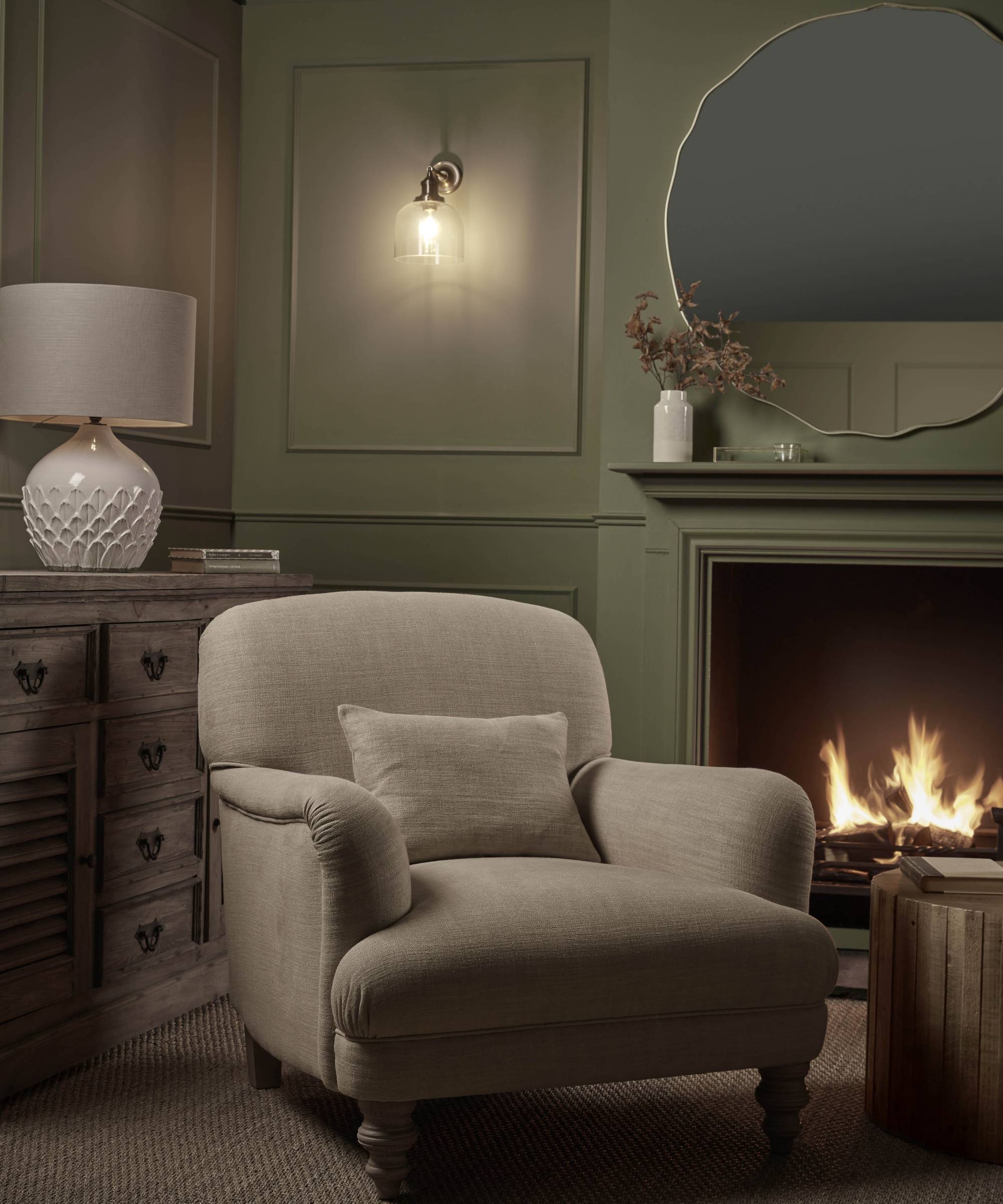
Wall lighting work brilliantly in rooms with low ceilings or small floor space, where floor lamps, spotlights and pendants might make the scale of the room feel disproportionate.
"In smaller rooms opt for downward-facing lights with clear glass shades to brighten the space," suggests Cox & Cox's Danielle Le Vaillant.

Danielle has worked for Cox & Cox for over 11 years. The interior design brand offers unique and characterful homeware to suit every taste.
5. Seek out new materials when considering wall lights
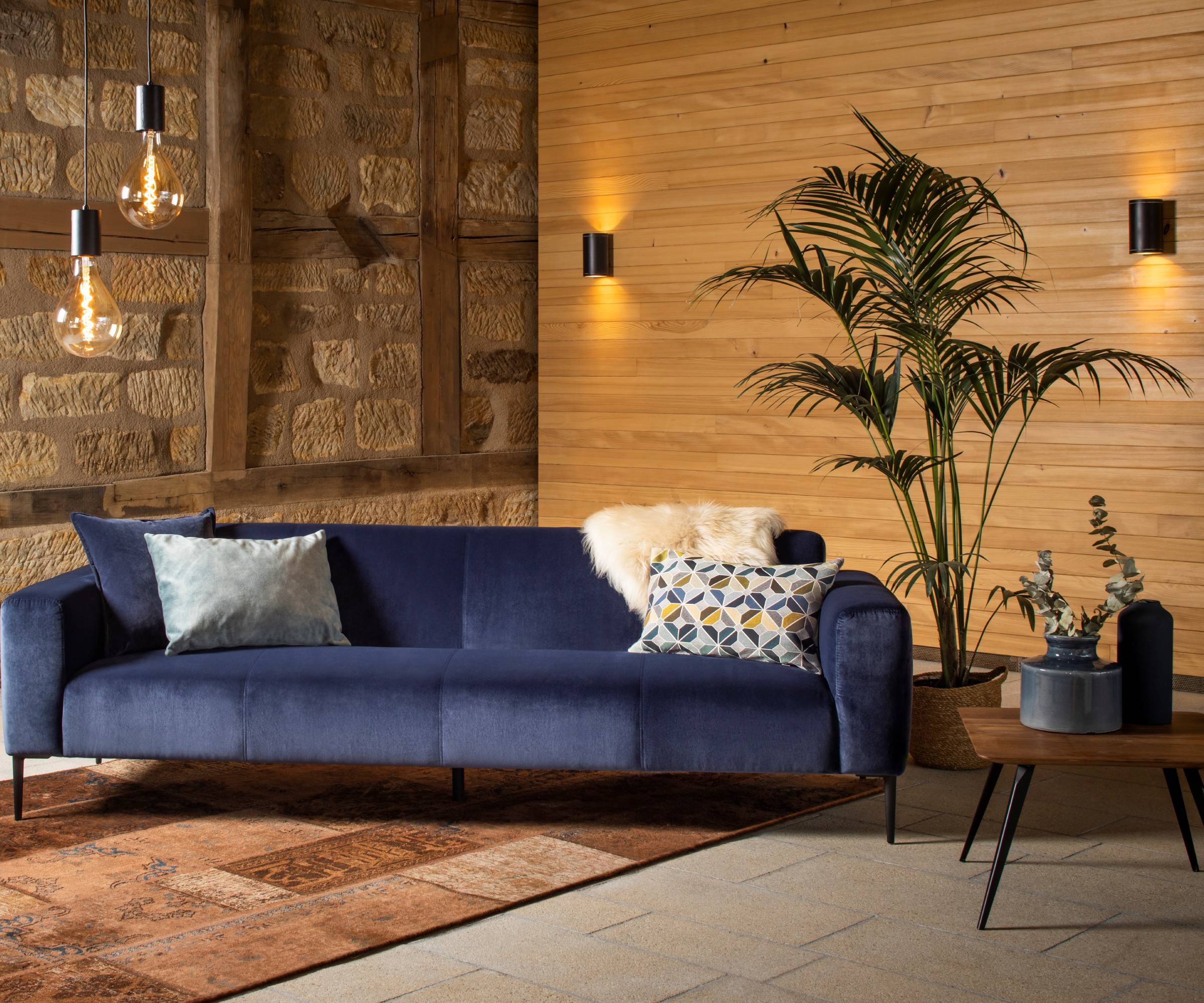
"We've seen a lot of natural and recycled materials, from the use of clay and plaster to reclaimed wood, plastic and rope recently," explains Vanessa Macedo. "Product designers have been bringing uncommon materials into the new designs of decorative fittings. That is visible not just on wall lights, but on pendants, table and floor lamps."
Here, industrial black steel lighting has been used on the wall and in the low-hung pendants. This, paired with the rustic brick, stone and timber on the walls creates a stylish mix of materials that is highly sought after.
6. Give a living room a quick makeover with new wall lights
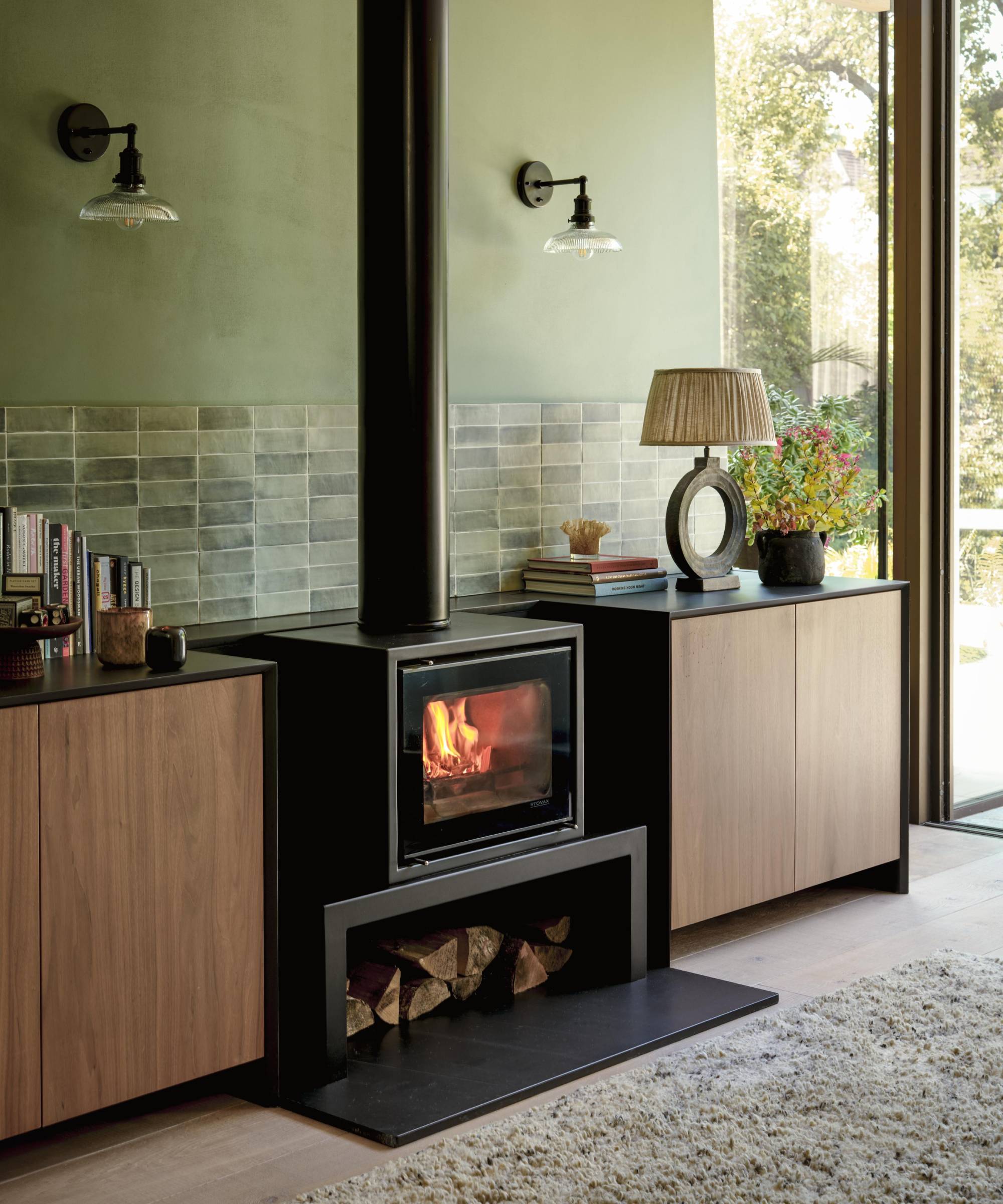
Switching up the style of your wall lights can be done fairly simply to give a tired living room a new feeling. If a new wall light will replace old like-for-like, and the wiring is up to scratch, then this is a task you can carry out on a DIY basis. If you hope to update wall lights as part of a rewire, or to change the position of your wall lights, then you will need to call in an Part P registered electrician.
Another DIY alternative is to specify 'plug in and play' wall lights. If there's a socket near, these simply need to be screwed into the wall and then plugged in — there's no wiring involved. (We particularly like the Edit Lypo Wall Light with Plug from Lighting Direct which retails at just £20.99.)
"Plug in wall lights continue to be popular, and understandably as they are a quick and easy way to add stylish lighting to an existing scheme without calling in an electrician," adds Danielle Le Vaillant. "They are particularly good for renters."
7. Use wall lights to make a large living room feel cosy
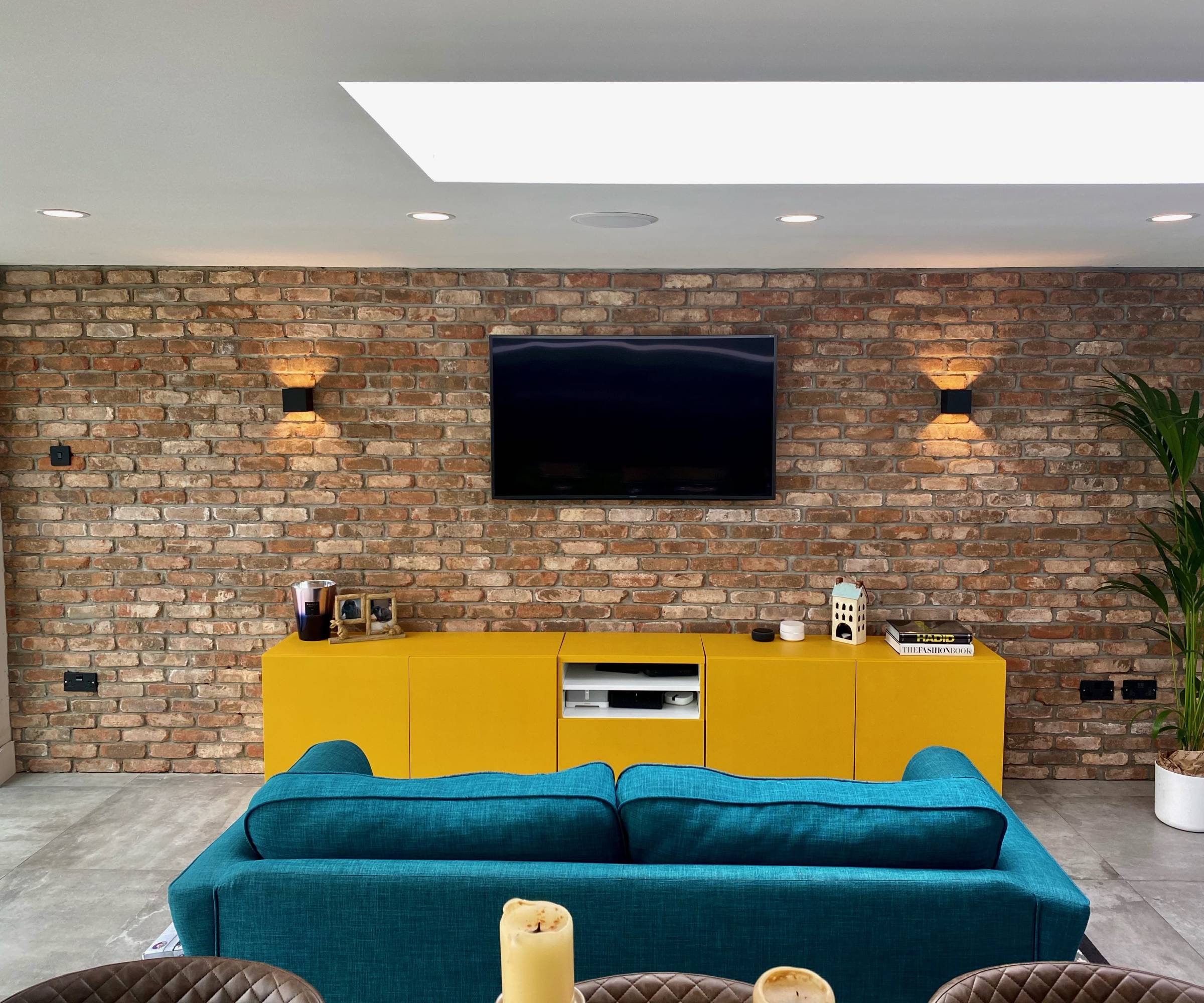
Although we might tend to think about large living rooms as open, airy spaces, this can actually work against itself when it come to interior and lighting design. You'll want to avoid casting deep shadows or creating dark corners by ensuring the space is appropriately lit from all angles.
"It is good to have lights in different planes of the room, so that not all the light comes from the ceiling or floor," explains Vanessa Macedo.
Danielle Le Vaillant adds: "In a larger room uplighters will diffuse the light for a cosier feel."
Looking for more lighting inspiration? Check our our guide to how many downlighters you need, fireplace lighting ideas, and ceiling lighting ideas.
Get the Homebuilding & Renovating Newsletter
Bring your dream home to life with expert advice, how to guides and design inspiration. Sign up for our newsletter and get two free tickets to a Homebuilding & Renovating Show near you.
Amy is an interiors and renovation journalist. She is the former Assistant Editor of Homebuilding & Renovating, where she worked between 2018 and 2023. She has also been an editor for Independent Advisor, where she looked after homes content, including topics such as solar panels.
She has an interest in sustainable building methods and always has her eye on the latest design ideas. Amy has also interviewed countless self builders, renovators and extenders about their experiences.
She has renovated a mid-century home, together with her partner, on a DIY basis, undertaking tasks from fitting a kitchen to laying flooring. She is currently embarking on an energy-efficient overhaul of a 1800s cottage in Somerset.
